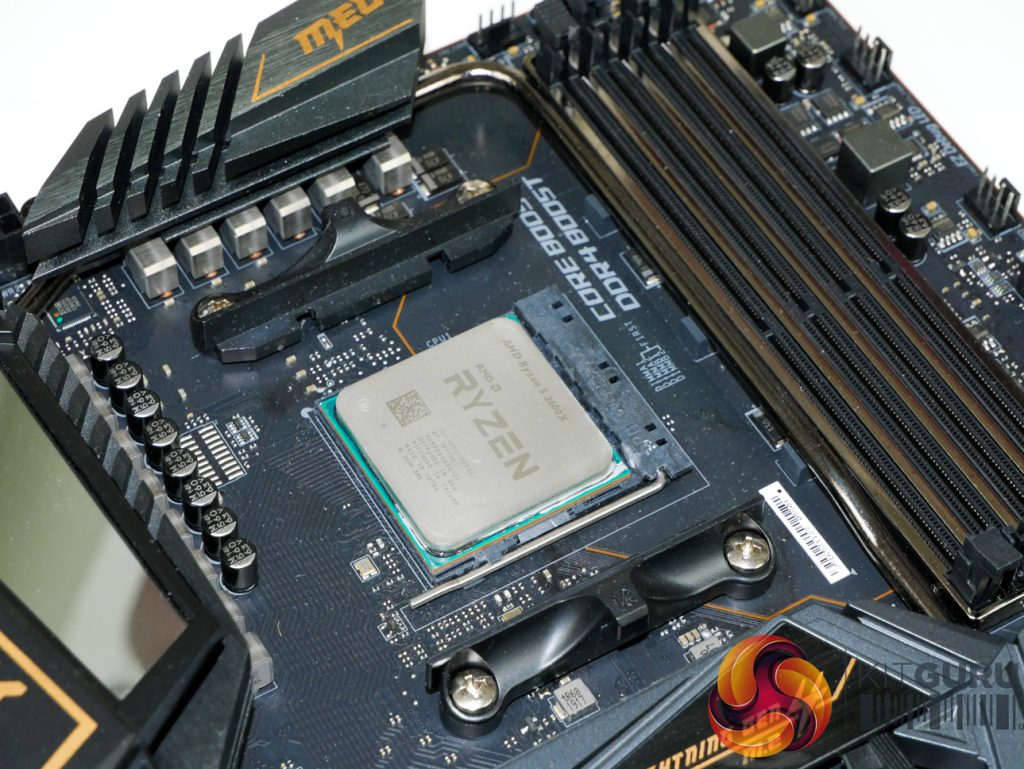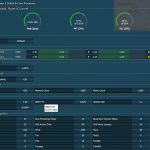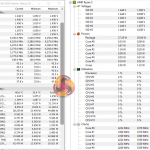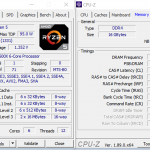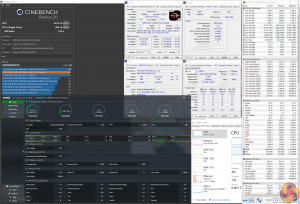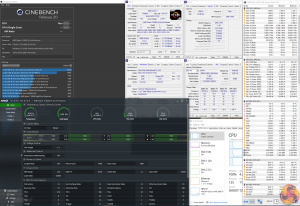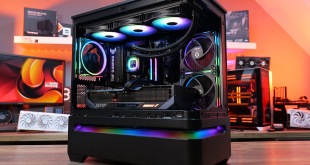Our objective with CPU overclocking is to hit frequencies that we think will be achievable for daily use by the platform’s buyers. As such, we test with sensible cooling hardware in the 240mm Corsair H100X AIO. We also used sensible voltages that lead to manageable thermal results.
Stability is confirmed by running multiple Cinebench tests, Handbrake video conversion, and AIDA64 CPU, FPU, and Cache stress test for at least 1 hour. We do not use Prime95 as we have found it to be overly demanding as a stress test application with the more recent AVX-capable versions.
The partnering hardware of choice was the MSI MEG X570 ACE motherboard, 16GB of 3200MHz CL14 DDR4, and a Seasonic Prime 1000W Titanium PSU.
Ryzen 5 3600X Frequencies:
We saw the 3600X generally hovering around 4125MHz during stock-clocked all-core loading in Cinebench. Single-thread frequency boosts jumped up to around 4300MHz, but our data seldom showed 4400MHz being hit.
Precision Boost Overdrive with the 200MHz Auto OC offset gave us, at most, an extra 25MHz on the clock speed. This was pointless in delivering meaningful performance changes.
The reason for the non-existent increase is likely related to the 3600X’s stock operating conditions. We don’t really see the package power or any of the motherboard VRM limits being hit, so PBO allowing these limits to be increased isn’t necessary.
Our manual overclocking delivered 4.3GHz stable all-core frequency with 1.35V. Despite only featuring six physical cores, temperatures were high at this setting even when using the Corsair H100X 240mm AIO.
With that said, an obscenely high ambient temperature on the UK's hottest day of the year certainly didn’t help. Don’t worry – our stock-clocked testing was conducted on a different day with more reasonable ambients, thus allowing PB2 to show realistic operating frequencies.
Overclocking comments:
If you want to overclock Ryzen 5 3600X to around 4.3GHz with 1.35V, you need a good CPU cooler. 4.2-4.3GHz seems like a reasonable target for Ryzen 5 3600X chips, though higher may be available with more voltage.
While 4.3GHz certainly delivered a performance gain, I would personally be inclined to enjoy the PB2 benefits of the chip at its stock clocks and settle for around 150-200MHz lower all-core frequency. But the unlocked multiplier gives buyers that freedom.
 KitGuru KitGuru.net – Tech News | Hardware News | Hardware Reviews | IOS | Mobile | Gaming | Graphics Cards
KitGuru KitGuru.net – Tech News | Hardware News | Hardware Reviews | IOS | Mobile | Gaming | Graphics Cards


